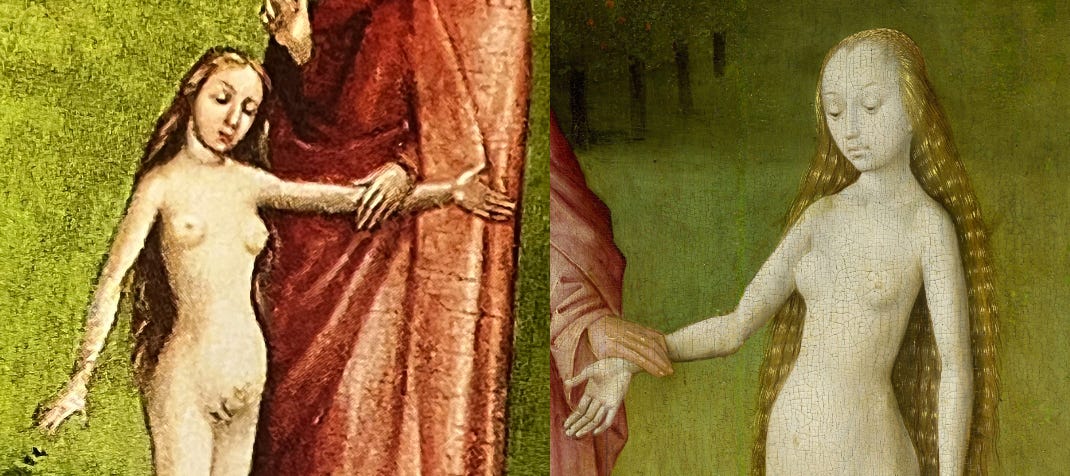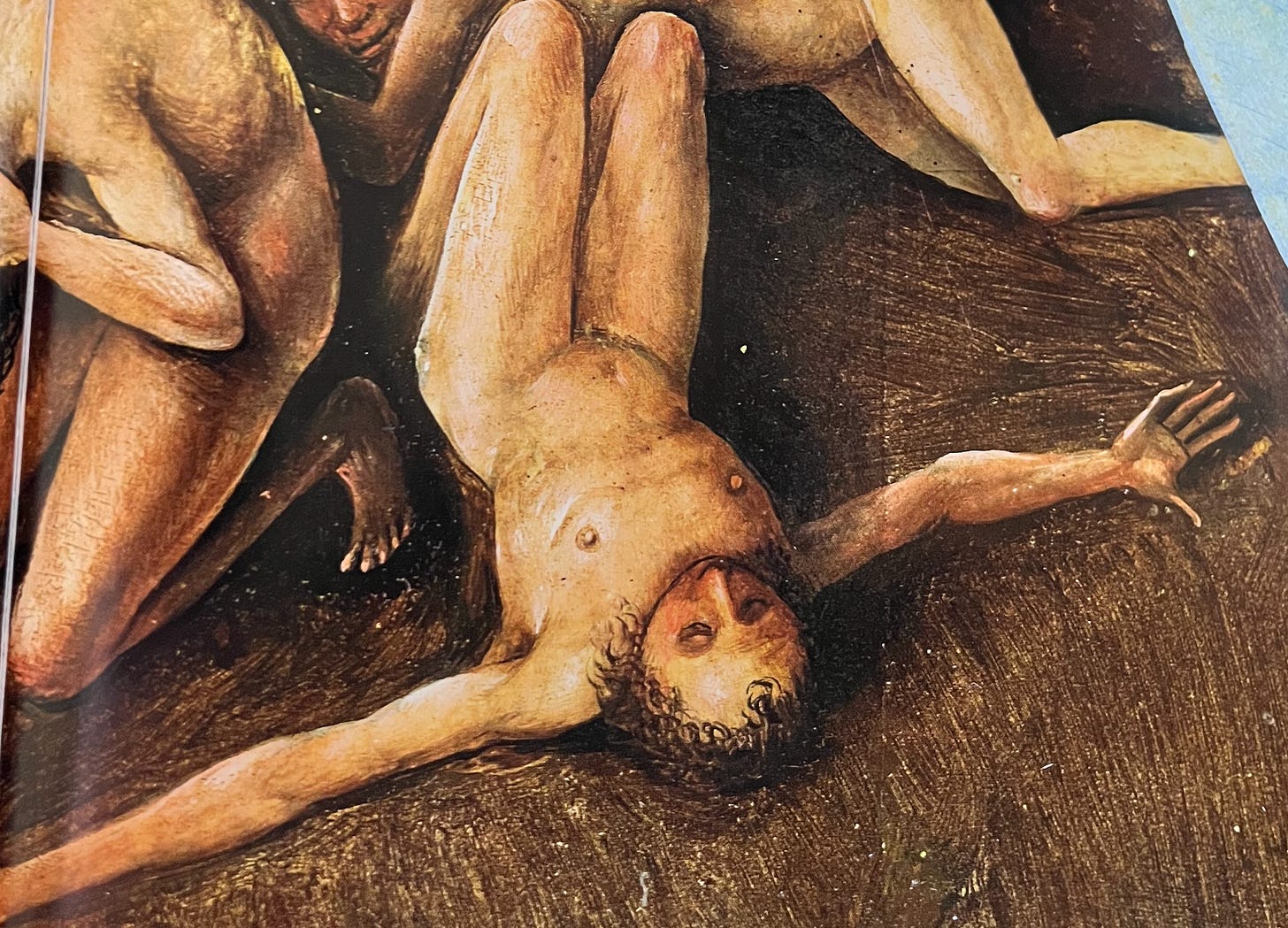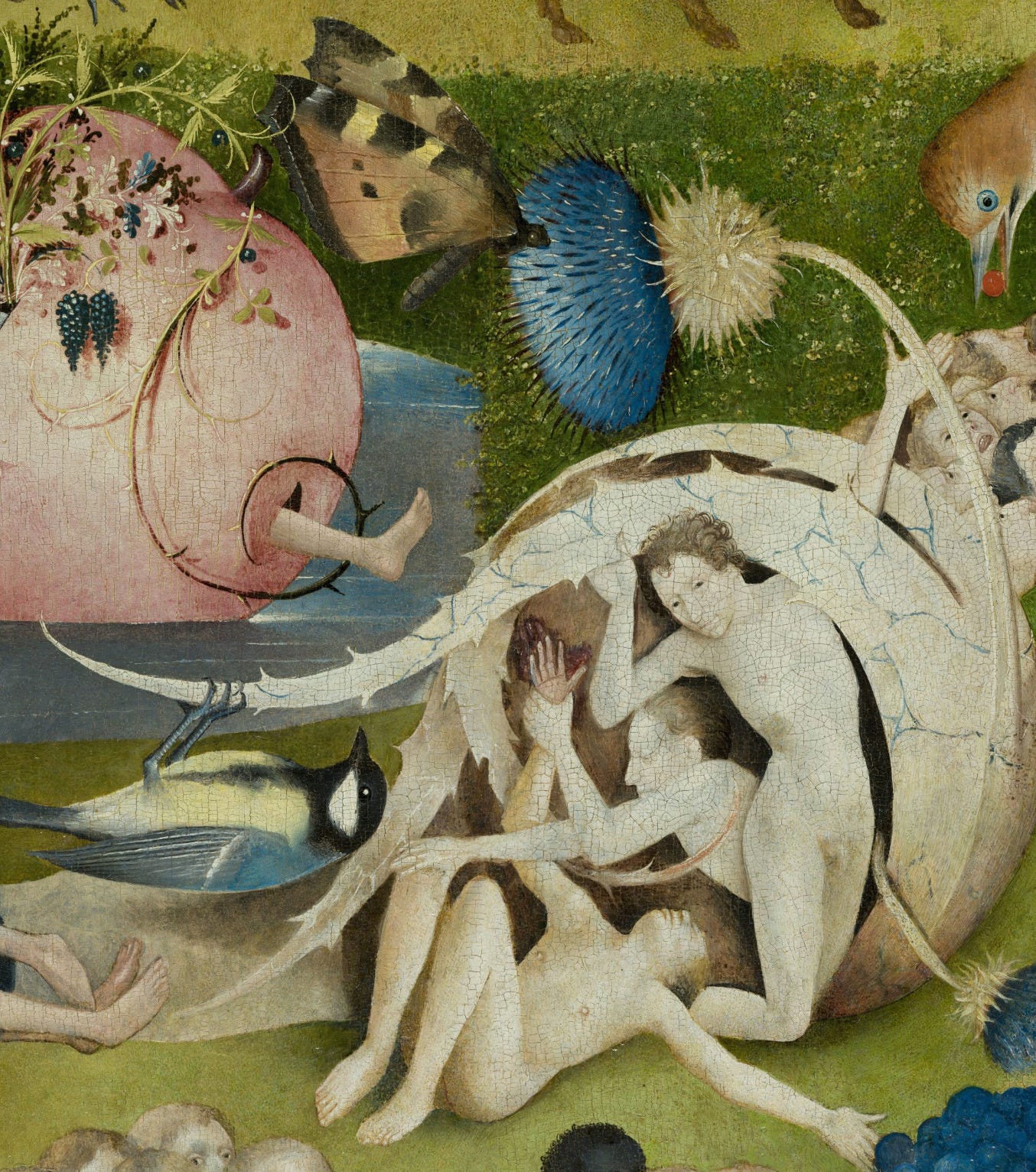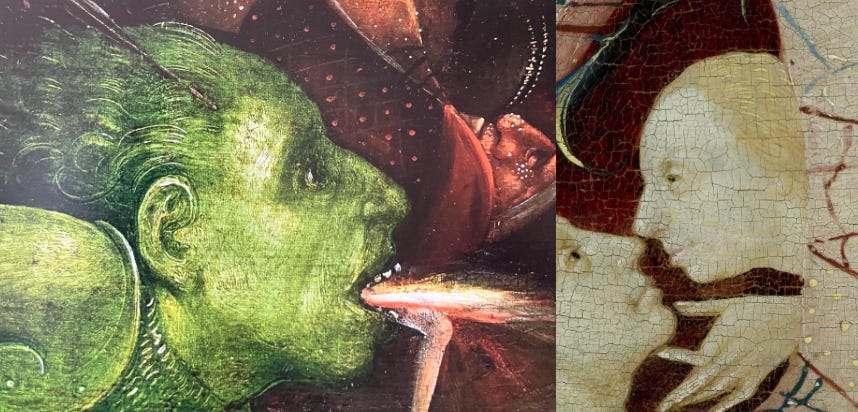The Last Judgment vs The Garden: Some Obvious Discrepancies
The two triptychs look to have very different hands on the brushes
My five or six years studying the Garden of Earthly Delights with (so to speak) a neuro-divergent concentration, has been made possible by the revolutionary website of Pieter van Huijstee which allows the viewer to zoom in to the painting to the level of the craquelure.
No such facility exists for Bosch’s Vienna Last Judgement, so I can’t say so many things about it. However, what is immediately apparent is that the Garden seems to be the product of one controlling mind and one artist’s brushes – and the Last Judgement is a creation of more than one artist, and that the parts created by Bosch are clearly different from (and opinions will vary, here) inferior to the Garden.
And it’s not just the reproduction,
Let’s look at the most obvious differences.

The care and detailed involvement of the Garden Bosch is apparent. But was it just a difference in care and creative energy?
They look to be entirely different, in style and sensibility.
There is another, lower, level of art critique.
The buttock work.
As a video in this series makes clear, Bosch fixation on the lower end of humanity is most apparent in the Garden triptych with five dozen pairs of buttocks on display – outnumbering pairs of breasts, incidentally, two to one.
In the Last Judgement, by a specialist’s count, there are under a dozen. And they are different in kind to the Last Judgement’s.
Here, Adam shows us a long bottom, somewhat crudely rendered with a heavy centre line marking the declivity. The comparison with the centre panel of the garden is very marked. The Last Judgement has none of the loving attention, the creative energy, the delicate blush on some examples, the contours to which the Daily Mail subs accord their highest accolade – a pert posterior.
At the other end of the spectrum, there are elements to be recognised. The famous carving knife with a notch in it appears in both triptychs. Unless this was a special feature of Flemish ironmongery, it suggests the model for the knife was part of Aleida Bosch’s kitchen.
Is this Judgement knife the same knife as in the Hell panel of the Garden? The big notch is very similar, although here there is a suggestion of a more ragged edge to the slant edge of the broken blade. There is also a second piece of damage nearer the haft,
If it is the same knife, that suggests the Judgement triptych was painted after the Garden – something I resist, as to my eyes, the Garden is a superior piece of art in theme and execution. I will have to find comfort in the thought that it might be a different knife. The haft may be different, and in the Garden knife there is an irregularity on the top edge closer to the haft that doesn’t appear here.
Again, opinions will vary.
This pose appears more than once in the Judgement, two of them in the same grouping.
The knife in the left hand man’s neck may help to confirm that the man on his back in the centre Garden panel – in that central vignette that this series posits to be a complex image of gay relationships (see video) – is actually dead.
Now, this may be too fanciful for some, but I sense of relationship between the inexplicable woman in the Judgement’s right panel (she is vertical, in situ) and the homely looking creature from the Garden panel (right).
My fancy is that it is modelled on the same woman – one who is, despite her less well-favoured features, capable of spell-binding a man but who can, when crossed, turn into an unrecognisable, fire-breathing dragon lady.
An extrapolation of the fancy has me wondering whether it is based on Aleida (Mrs) Bosch.
A small point, as lawyers say, it with takes or it doesn’t.
Is the Garden of Earthly Delights a better work of art?
The execution is more detailed, more expert, more finely crafted. The themes are more complex, the interpretation more contested, the zones more defined, the panels more populated. There are far more anecdotes and narratives in the interacting characters of the Garden.
The Garden also has the Treeman. Nothing else comes close to him.
In this interpretation the Freeman’s face has a cool Renaissance intelligence looking out over the horrors and superstitions of the waning Middle Ages (see the Revelation video, if interested in the whys and wherefores of that assertion).
https://archief.ntr.nl/tuinderlusten/en.html












